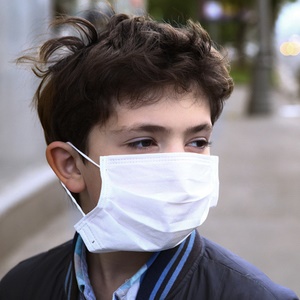
A new SARS-like virus is spreading through China and has infected nearly 300 people, according to the latest News24 report. The first case has just been identified in Washington in the USA, and airports are implementing screening measures to curb the spread of the disease.
This virus appears to be an entirely new strain of coronavirus (novel coronavirus or 2019-nCoV), even though it may be closely related to the virus that caused severe acute respiratory syndrome (SARS) a number of years ago.
So what exactly is this “new illness” and how is it similar to SARS?
1. Why is it called 'novel coronavirus' or 2019-nCoV?
The word “corona” means crown and “novel” means new. These groups of viruses are named coronavirus because of the distinct, crown-like spikes you can see under a microscope.
A new strain has been discovered, hence “novel”. The abbreviation is nCov and 2019 signifies the year it was first identified. For simplicity, we will refer to it as the new coronavirus.
2. What exactly is the coronavirus?
Coronavirus is a group of viruses that can cause a range of symptoms including a runny nose, sore throat and cough or fever. Some cases are mild but others are more severe and can lead to deadly pneumonia.
In the past, strains of the coronavirus have caused serious outbreaks of illnesses, such as severe acute respiratory syndrome (SARS) which was first reported in Asia in February 2003, and Middle Eastern respiratory syndrome (MERS) which was identified in Saudi-Arabia in 2012.
Both SARS and MERS had symptoms such as fever, cough and shortness of breath in common. The deadliest cases included pneumonia.
3. What are the initial symptoms of this new coronavirus?
Common signs of the newly identified coronavirus have been listed by the World Health Organization (WHO):
- Coughing
- Breathing difficulties, wheezing and shortness of breath
- Pneumonia
- Severe acute respiratory syndrome
- Kidney failure
4. Where did the new outbreak start?
In December 2019 a patient in Wuhan city, China, reportedly complained of symptoms similar to pneumonia and visited a local hospital. Within days, patients presented with similar health problems and officials started investigating this new illness.
5. How does the new coronavirus spread?
In the past, scientists determined coronaviruses to be mostly zoonotic (a disease that spreads from animals to humans). The origin of SARS was found to be bats and civet cats, while MERS was traced back to the dromedary camel.
While the origin of 2019-nCoV was found to be a seafood market in Wuhan, scientists were not initially sure if there was clear evidence of human-to-human contact. But recently, Chinese health officials confirmed that human-to-human transmission was the cause in some of the cases.
Image credit: iStock




 Publications
Publications
 Partners
Partners











